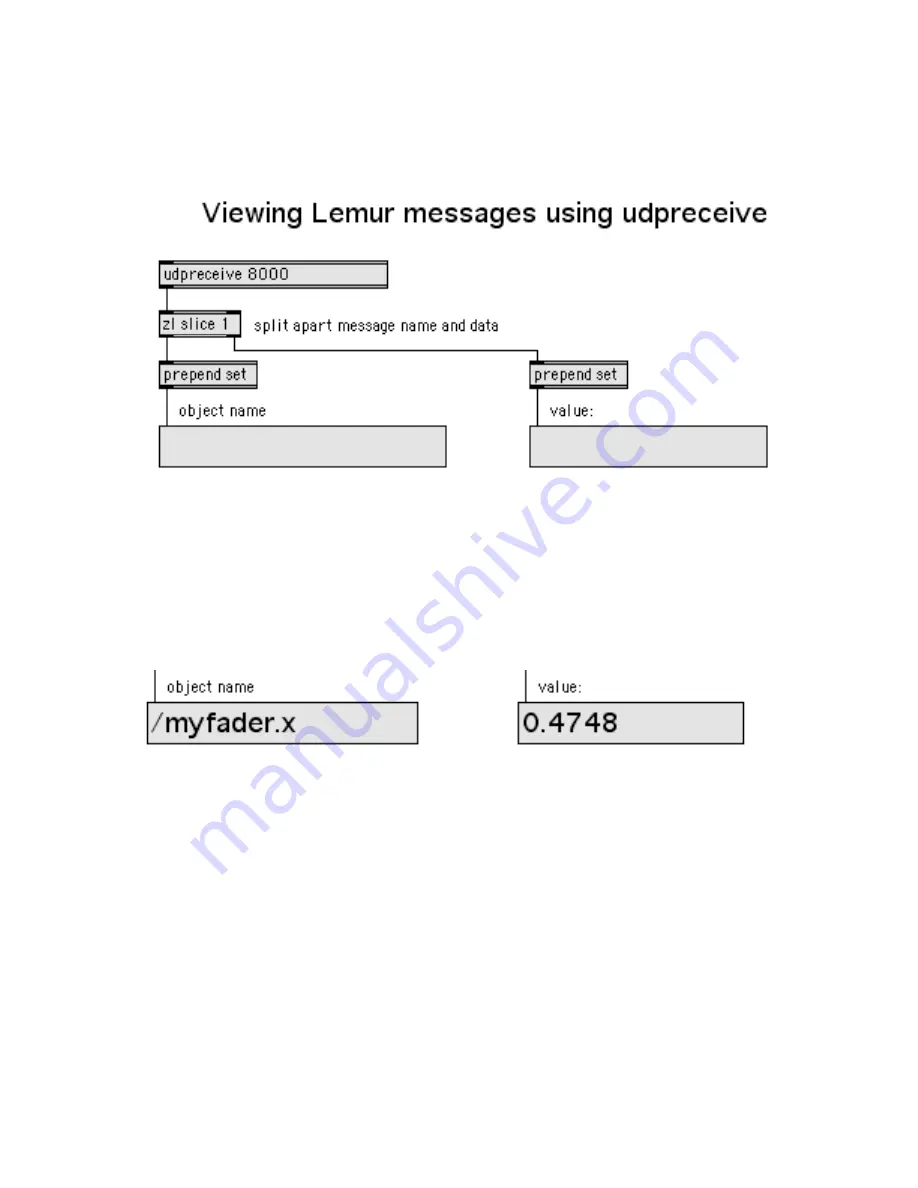
44
•
From within Max/MSP, open the file called SeeingMessages.mxb in the Lemur Extras
folder. The patch is displayed (in reduced form) below.
Network packets are received by the
udpreceive
object at the top of the patch. The
udpreceive
object understands the Open Sound Control protocol so it can handle messages
coming from the Lemur. It outputs a Max message consisting of the Open Sound Control
message name (the object plus variable name preceded by a slash) followed by the
message values. Here is the data processed by udpreceive for Lemur message sent from a
Fader object called myfader, which sends one value.
The
zl split
object separates the message name and values to be displayed by the two
message boxes.
•
If you have an Interface on your Lemur, touch some of the objects. The button
beneath the
udpreceive
object should light up and you should see the message name
and the associated values transmitted by the Lemur. We’ll explain the format of the
message name in a moment.
•
If you do not see the button light up or any data displayed, verify that the JazzEditor
shows the Lemur as connected, that the Target IP shown in the Settings window on
the Lemur (and JazzEditor) matches the IP address of your computer, and that the
object and variable name boxes are checked in the JazzEditor’s Project Browser for the
object you are touching.






























